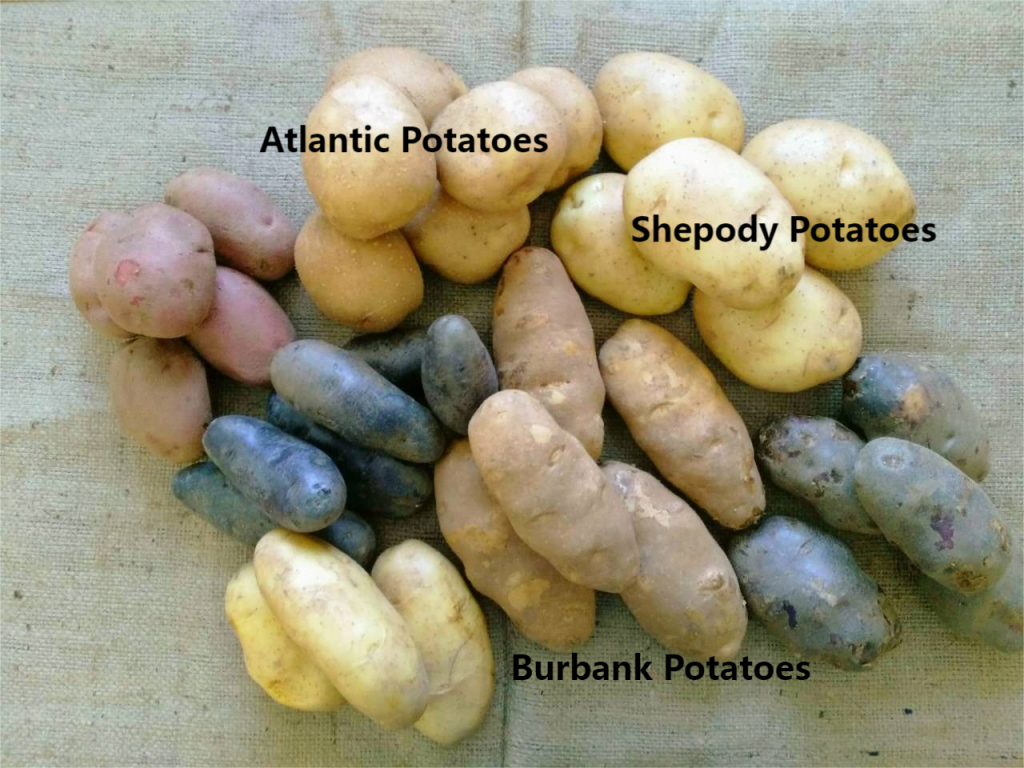Hojuelas de papa production has stringent requirements for raw materials. Specific potato varieties are chosen, and criteria such as size and dry matter content are regulated.
Not all potatoes available in supermarkets are suitable for hojuelas de papa production. Potatoes used for this purpose are termed as processing potatoes, distinct from those used for household cooking, known as table potatoes.
In general, using the best potatoes to produce hojuelas de papa, the ratio of potatoes and potato flakes is roughly 6:1, which means using 7 kg of fine potatoes can produce only 1 kg of potato flakes. That is one main reason why potato flakes are so expensive.
Entonces, let’s see what varieties are the best materials for potato flakes.
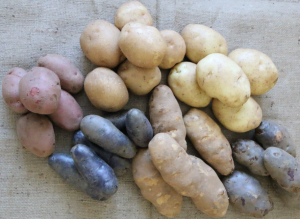
Common Varieties Used for Potato Flakes Production:
Atlantic Potatoes
Origin: Developed in the USA through hybridization using B5141-6 (Lenape) as the female parent and Wauseon as the male parent. Introduced to China in 1978.
Key Features:
- Diverse tuber shapes including round, oval, and elongated, with varied skin colors such as brown, red, yellow, and purple.
- High starch and protein content, making them indispensable in daily diets.
- Strong adaptability and resilience to cold, early planting, infertile soils, and diseases and pests. High yields and a short growth cycle make them widely adaptable.
- Continuous improvement in yield and quality through selective breeding and cultivation techniques tailored to various regions and environments.
Atlantic potatoes are the most commonly used variety in potato flakes production in China.
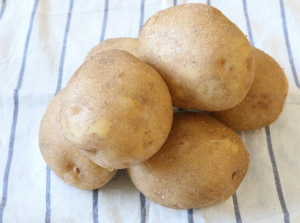
Shepody Potatoes
Origin: Originally named Shepody, developed in Canada in 1980, and introduced to China from the USA in 1987.
Key Features:
- Mid-maturing variety, taking approximately 120 days from planting to maturity.
- Sturdy stems with multiple branches, oval leaves densely covering the plant, and light green coloration.
- Flowers are light purple (some strains may have white flowers) with white-tipped petals, blooming early and continuously.
- Tubers are elongated, typically over 10 cm in length, with some exceeding 20 cm. They have white skin and flesh, with shallow eyes. The high proportion of large tubers (weighing over 280g). Dry matter content ranges from 19% a 23%, with a reducing sugar content of 0.2%, and a commercial yield rate of 80%-85%.
- Strict cultivation requirements, sensitive to waterlogging, preferring well-drained sandy loam soil and sufficient irrigation.
- Susceptible to early blight, late blight, and common scab diseases, as well as PVX and PVY viruses, resulting in a high incidence of tuber diseases.
Shepody potatoes yield approximately 1.5-3 tons per mu (666 square meters), making them suitable for potato flakes production across different regions.
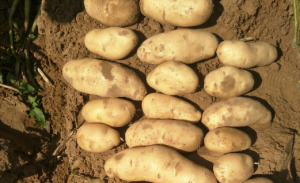
McCain Potatoes
Origin: United States
Key Features:
- Strong Adaptability: McCain potatoes thrive in various climates, soils, and terrains, even in bad environments.
- High and Stable Yield: It has high and stable yields, averaging over 2000 kilograms per mu (666 square meters).
- Excellent Quality: McCain potatoes offer a delicious taste, great texture, and rich nutrition after cooking, earning widespread popularity.
McCain potatoes are commonly used in the production of frozen French fries and serve as high-quality raw materials for potato flakes production.

Burbank Potatoes
Origin: Derived from the United States, Burbank potatoes are specifically bred for making potato fries.
Key Features:
- Plant height of 80 cm with an upright growth habit, featuring white flowers. Stems are thick with purple pigmentation.
- The tuber shape is elongated, with brown netted skin and white flesh. Shallow and sparse eyes, with large and uniform tubers concentrated in clusters.
- Contains 23.8% dry matter, 18.2% starch, 17.6 mg/100g of Vitamin C, y 2.18% protein. Low reducing sugar content at 0.63%.
- Moderately resistant to Potato Y virus (25.8R) and Potato X virus (26.5R) but highly susceptible to late blight.
- Strict cultivation requirements, not tolerant to drought or waterlogging. Burbank potatoes have white flesh, low reducing sugar, and excellent taste. They are also resistant to storage, maintaining quality when stored properly under controlled temperature and humidity for up to a year.
Burbank potatoes are also excellent varieties for producing fries and potato flakes, albeit with relatively higher cultivation difficulty.
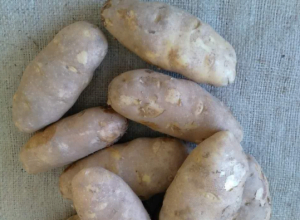
Additional Potato Varieties Suitable for Potato Flour Production in China:
Long Potato 1
Longshu 1 is an early-maturing, high-yielding, heat-tolerant potato variety suitable for potato flour production. It has a starch content of over 18% and features regular potato shapes with soft flesh. Ideal for processing into various expanded foods, noodles, and potato skins.
Zhongjian 10 Papa
Zhongjian 10 is an excellent variety for potato flour production with a starch content of over 20%. It boasts good potato shapes and fine flesh texture, making it suitable for processing into fries, chips, puré de patatas, and various starch products.
Qinghai 5 potato
Qinghai 5 is a high-starch, high-yielding, moisture, and heat-resistant potato variety suitable for potato flour production. With a starch content of over 22%, it features regular potato shapes and delicate flesh texture. Ideal for processing into various starch products such as starch powder, potato skins, and noodles.
Resumen
Many more potato varieties can be used for potato flakes production that I did not list here. In fact, atlántico, Shepody, McCain, and Burbank are mostly used in China to produce potato flakes and that is why most Chinese potato flakes are white. The reason for choosing these varieties of potatoes is there is one thing in common, which is that they all have the characteristic of high dry matter content.
